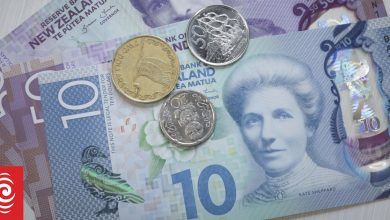What’s the best home loan term to fix for now?

Home loan interest rates have been the big story of recent years.
They have risen from historic lows of about 2 percent to more than 8 percent in some cases, and put pressure on many household budgets in the process.
The Reserve Bank made it clear this week that it doesn’t expect the official cash rate to fall any time soon, which is expected to put a floor under any further retail interest rate drops.
So what should you do if you’re taking out a new loan or refixing an existing one?
Glen McLeod, Edge Mortgages
Glen McLeod said, up until this week’s announcement from the Reserve Bank, he was wavering between six month and 12-month fixes.
“My preference is now firmly in the 12-month rate. With the hawkish rhetoric from the Reserve Bank, for me the six-month rate is now off the table.”
He said 12-month fixes would be at a rate of between 6.85 percent and 6.99 percent when discounted. “While it is more expensive than the 18 to 24-month lending, it does bring greater flexibility. Taking the longer-term interest rates may result in your rates being higher for longer than they need to be.”
Jeremy Andrews, Key Mortgages
Jeremy Andrews said he would probably “hedge his bets” with an 18-month fix.
“We’ve been seeing the most common choices as six, 12 and 18 months fixed lately.”
Some people were pushing out to a 36-month fix, which was about 20 basis points cheaper than a one-year option, he said.
“It’s always best to get some mortgage advice to a specific situation, as future goals will have a big impact on this decision too.”
Karen Latimer, Mortgage Lab
Karen Latimer said she was a fan of splitting a loan into smaller parts and fixing them across a range of terms to spread the risk.
“At present I would fix for anywhere between 12 to 24 months as it looks like we won’t be seeing any significant drops in interest rates until 2025 at the earliest. Again, the final strategy should be decided with the borrower’s individual circumstances in mind.”
Stuart Wills, Mortgage Managers
Stuart Wills said if he were fixing his own borrowing, he would go for a shorter term “and take a risk”. “That’s because if it did go up, it’s not the end of the world.”
He said most clients refixing were opting for six or 12-month terms. But someone with a new mortgage might choose to fix a portion for longer.
“We don’t know what the future holds. Everyone is predicting rates will go down but there’s an element of risk, they could go up. The conversation is ‘how risk averse are you’.
“If you’re quite comfortable to take risk and you’ve got more surplus income, you might break a loan into two and fix one part for six months and one for 12. But if you’re pushing the boundaries, a first-home buyer right at the limit of what you can afford, you might fix a portion for three years or something to give security.”
David Cunningham, Squirrel
David Cunningham said fixing short, on a term of 18 months or less, made sense based on the likely track for the official cash rate.
“Although the interest rate is higher than you can get for two or three years, a sub-7 percent one-year rate is likely to be obtained from most banks.
“The Reserve Bank is holding rates up with the OCR and inflation track in the latest MPS. My view is that once inflation is snuffed out, home loan rates will likely fall over the course of 2025/2026 towards 5 percent.”
According to the news on Radio New Zealand




